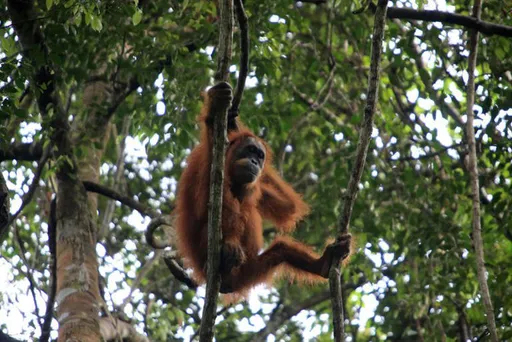After the election of Ebrahim Raisi in Iran, the US issued some positive statements, especially regarding the nuclear file. Then, last week, the US launched several raids targeting pro-Iranian militias on the Syrian and Iraqi borders, after which Iranian militias targeted the Al Omar field base in Deir Ezzor, in Syrian Democratic Forces (SDF)-held areas where American forces are stationed.
This recent escalation can be viewed separately from the US’ policies towards Iran, which primarily focus on reviving the nuclear agreement and redefining the relationship with the incumbent and incoming Iranian government.
The recent US hits on Iranian positions in Deir Ezzor was more a show of power from the US, especially after the Iraqi Sayyid al Shuhada militia, a faction of the Hashd al Shaabi, staged a military parade before the US strike.
It appears that the US administration desires to compartmentalise the Iranian files so that the Iranian presence in Syria does not affect the nuclear negotiations file, and it remains clear that the US considers Iran’s presence in Syria problematic, especially if it poses a direct or indirect threat to its forces stationed in eastern Syria.
The Syria-Iran alliance
The Syrian-Iranian alliance expanded in 2000 when Bashar al Assad took over the presidency in Syria. The Iraq War and the 2006 Lebanon War brought the two countries closer together, and Syria became increasingly dependent on Iran for political and military support since Assad was unable to maintain positive relations with other Arab states.
Since the beginning of the revolution in 2011, Iran has increased its military and security influence in Syria in different ways. However, a decrease in military operations in the country has meant that Iran began searching for new ways to enhance its control and influence.
After successfully infiltrating the regime’s army and security apparatus, beginning in 2017, Iran began focusing on infiltrating Syrian society and strengthening its relations with Syrian businessmen.
Several events in recent years have had a direct impact on the nature of the US-Iran conflict in Syria, including the nuclear deal under former president Barack Obama, which allowed Iran to manoeuvre within Syria at various levels; and then its cancellation under the Trump administration, which started a new stage of military and economic pressure on Iran.
But perhaps the most prominent events that changed the shape of the US and Iranian conflict in Syria between 2020 and 2021 are the assassination of Qasem Soleimani; the elections of Biden and Raisi in the US and Iran, respectively; the renewal of the nuclear negotiations and the ongoing military messages between Iran and the US.
Soleimani assassination
Starting in 2018, Iran made a series of changes to its military presence in Syria to protect its most important sites after the end of the battles against ISIS (Daesh), the pressure of repeated Israeli strikes on its locations and the assassination of al Quds Force Commander Qasem Soleimani in Baghdad on January 3, 2020.
Deir Ezzor on the Iraqi border, in particular, witnessed extensive changes in Iranian military presence after the death of Soleimani.
Iran repositioned nine major military locations in Al Bukamal, which has a border crossing into Iraq, four military locations in Homs and one location in Aleppo. No changes were observed in the Iranian military presence at that time in Damascus, Hama, Daraa and Raqqa.
With these changes, Iran aims to adapt to the changes in politics and on the ground and absorb the pressures imposed on it, thus reducing its losses and maximising its long-term gains. These changes also had no direct effect on the shape and nature of the Iranian military presence in Syria.
To this day, Iran’s main headquarters remain in Damascus, Aleppo and Deir Ezzor, and it does not seem that it is in the process of withdrawing from these locations.
Biden administration and Raisi’s election
Tensions between the US and Iran have varied between different US administrations — that didn’t change when Iran began its intervention in Syria.
During the Trump administration, the US-Iranian relationship became more complex, reverberating negatively between Iran and its neighbourhood.
But even during the Trump administration, tensions between the US and Iran did not escalate to military action except in rare cases, the most prominent of which was the US targeting of more than 20 Syrian regime sites with an Iranian presence in Syria on April 14, 2018, after it was proven that the Syrian regime used chemical weapons in Khan Sheikhoun.
Yet, the targeting of Iranian sites happens randomly and aims to destroy a specific target and doesn’t directly affect Iran's plans in Syria.
Despite President Biden’s criticism of former President Trump's Iran policy, many voices within the Biden administration thought Trump's sanctions may help in extracting concessions regarding Iran’s nuclear program and foreign policy.
Perhaps the Biden administration preferred not to move aggressively towards Iran until the end of the Iranian presidential elections. The winner, Raisi, is the first Iranian president to be on the US sanctions list for human rights abuses, and his election came as Iranian and US officials were holding the sixth indirect talks in Vienna to revive the nuclear deal.
Raisi’s election may help facilitate talks between the US and Iran, but it may also pose some challenges. Iran's Supreme Leader Ali Khamenei, the conservative parliament, and the IRGC will be able to negotiate from a position of strength domestically without having to fear a backlash at a local level.
But if president Raisi adopts an aggressive approach toward the US, it could hurt the prospect of negotiations with the West and Iran's neighbours in the Gulf. On the other hand, Ebrahim Raisi will not assume his role as a president until August 2021, which might give negotiators in Vienna more time to finalise a return to the nuclear deal without being interrupted by the transfer of power in Iran.
























